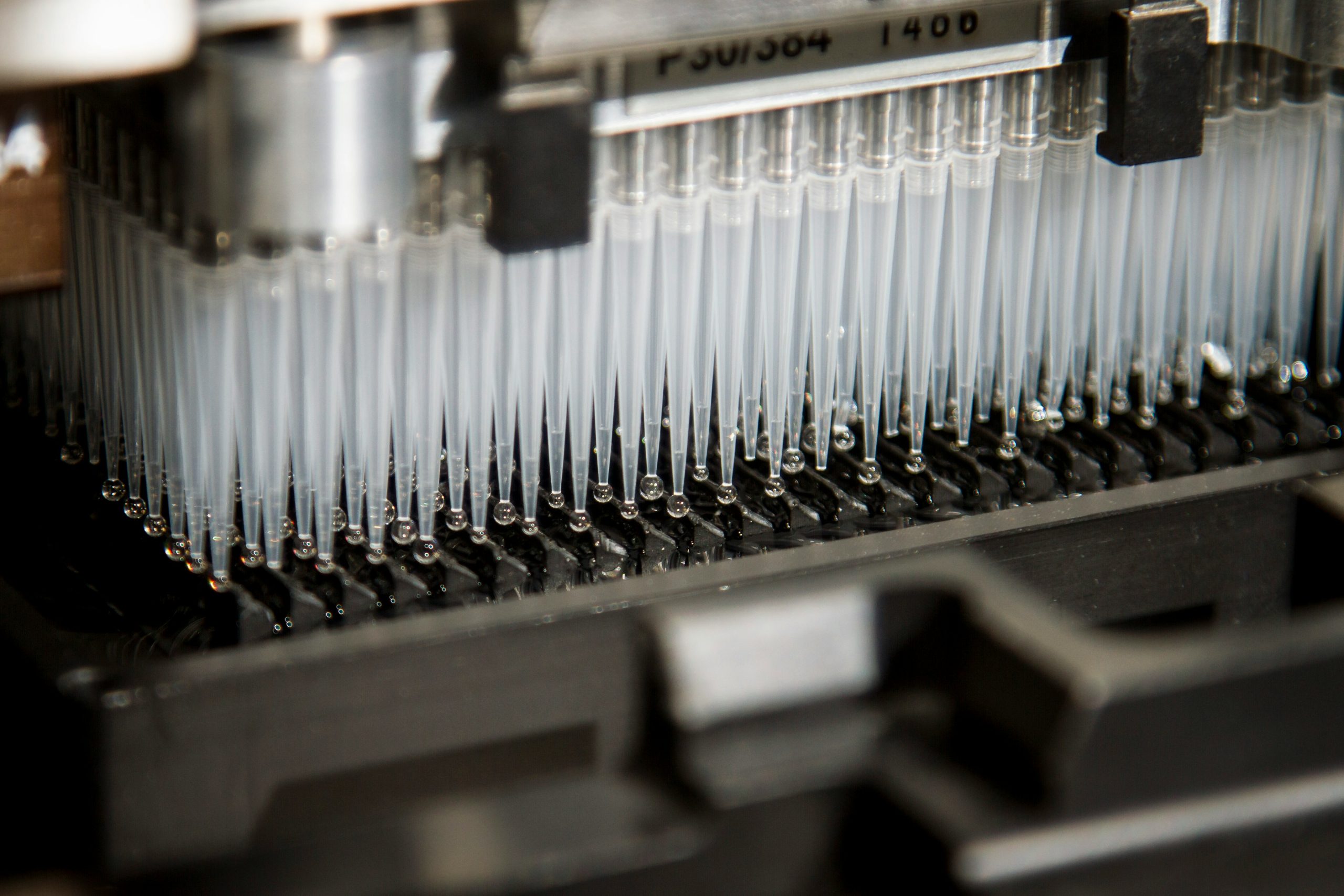How did an exciting series of genetic experiments result in winning the 2024 Nobel Prize in Physiology or Medicine? Photo credit: National Cancer Institute via Unsplash
In the early 1980s, Victor Ambros and Gary Ruvkun worked together as postdoctoral fellows in the laboratory of future Nobel laureate H. Robert Horvitz, studying the tiny roundworm Caenorhabdidtis elegans. Their paths subsequently diverged, with Ambros establishing his own group at Harvard University and Ruvkun moving to Harvard Medical School. Their collaboration, however, endured, and within two decades enkindled a breakthrough worthy of a Nobel Prize of their own. On 7 October 2024, the Nobel committee honoured Ambros and Ruvkun jointly for the discovery of microRNAs—molecules involved in a fundamental mechanism of gene regulation.
Their collaboration, however, endured, and within two decades enkindled a breakthrough worthy of a Nobel Prize of their own.
DNA is organised into genes, each containing instructions for a cell to make a specific protein. Since DNA is stored in the nucleus, genes are first copied onto a short messenger (m)RNA molecule, which can travel to and instruct the protein-assembling part of the cell—the ribosome. Given that every cell in our body contains the same DNA, yet different types of cells perform diverse roles in the body, there must exist ways in which cells switch on specific instructions at specific times. Various mechanisms collectively regulate gene activity at distinct stages along the conversion of DNA to mRNA to protein.
…there must exist ways in which cells switch on specific instructions at specific times.
MicroRNAs are a different, and even shorter, type of RNA molecule. Once they are synthesised and processed in the cell, microRNAs are loaded onto a “silencing complex”. This complex finds and latches onto target mRNA strands that correspond to the microRNA’s sequence, preventing these mRNAs from being converted to proteins—essentially switching off genes. All of this has only become clear well after Ambros and Ruvkun discovered the first microRNA in 1993.
In the Horvitz lab where Ambros and Ruvkun worked as postdocs, mutations in the lin-14 gene were shown to profoundly disrupt developmental timing in C. elegans. Ambros noticed that worms with mutations in lin-4, a different gene, had developmental defects that were opposite to those observed in worms with mutant lin-14. He knew that lin-4 appeared to suppress expression of lin-14, but didn’t yet know the mechanism. Later, Ruvkun found that lin-4 didn’t block the production of lin-14 mRNA, but appeared to shut down protein production more directly. It was only when the Ambros and Ruvkun independently sequenced the two genes that they noticed the short lin-4 gene did not itself encode a protein, but complemented critical portions of the lin-14 sequence. Therefore, lin-4 could bind lin-14 directly: these RNA-RNA interactions temporally downregulated translation of the protein product of lin-14 in C. elegans from the earliest larval stage, thus controlling development.
For over half a decade, their results were largely ignored.
For over half a decade, their results (published in two 1993 papers in Cell) were largely ignored. It seemed the scientific community had concluded this gene regulation mechanism was a peculiarity of C. elegans—and as such, irrelevant to more complex organisms. Perceptions changed when, in 2000, Ruvkun’s group published two consecutive Nature papers: the first identifying a second microRNA gene, let-7, in C. elegans and the second revealing that let-7 sequences could also be found in the fruit fly and human. Clearly, microRNA regulation of gene activity was an evolutionarily conserved and thus important principle. Discoveries made in worms could be relevant to human biology after all.
The 2024 Prize is the fourth awarded for work on nematodes (the phylum comprising roundworms, like C. elegans, and eelworms). It is a powerful reminder that research driven simply by a desire to further scientific understanding (so-called “blue skies research”) is still necessary and recognised today. Indeed, Ambros told Nobel Prize Outreach in a telephone interview that this award is ‘a celebration not really of the particular scientist, in this case, but of [this] way of doing science’.
Since the 2000 Nature papers, research in the microRNA field has exploded.
Since the 2000 Nature papers, research in the microRNA field has exploded. Usefully, the conception of the field has coincided with an exponential increase in the use of computational tools in the lab, and with the availability of reference genomes for key organisms—including humans. Now, given a specific microRNA, we can rapidly predict the entire set of mRNAs it will interact with, and their corresponding nucleotide sequences.
This has allowed us to gradually uncover the significance of microRNAs in disease. For instance, in several cancers, including cancers of the ovary, breast, and lung, tumour cells reduce their expression of Dicer, an enzyme involved in microRNA biogenesis. When microRNAs aren’t synthesised in the appropriate amounts, this allows unchecked expression of oncogenic (tumour-promoting) genes, including those responsible for the first step in metastasis (the spread of a cancer throughout the body). Moreover, microRNAs are involved in the development of type 2 diabetes, cardiovascular diseases, and autoimmune conditions.
As we gain more insight into how microRNAs regulate healthy and diseased states alike, there is increasing potential to leverage this knowledge to achieve therapeutic outcomes. Overall, RNA therapies are on the rise: two small interfering (si)RNA drugs are currently licensed for use in the UK, and the principle underlying mRNA vaccines earned Katalin Kariko and Drew Weissman the 2023 Nobel Prize. One day, microRNA-based therapeutics (including drugs that either block or mimic specific microRNAs) may become just as ubiquitously known as the Pfizer/BioNTech COVID vaccine.
As Professor Venkatraman Ramakrishnan, co-recipient of the 2009 Nobel Prize in Chemistry, said, this is a ‘long-awaited’ Prize that has ‘opened up an entirely new field of biology’. Ambros and Ruvkun unveiled a physiological mechanism fundamentally important to how all cells function—and by making the discovery in C. elegans, they have cemented a role for curiosity-driven research in modern-day science.





